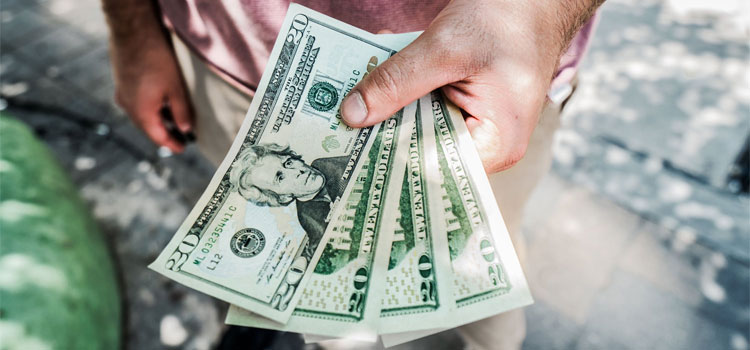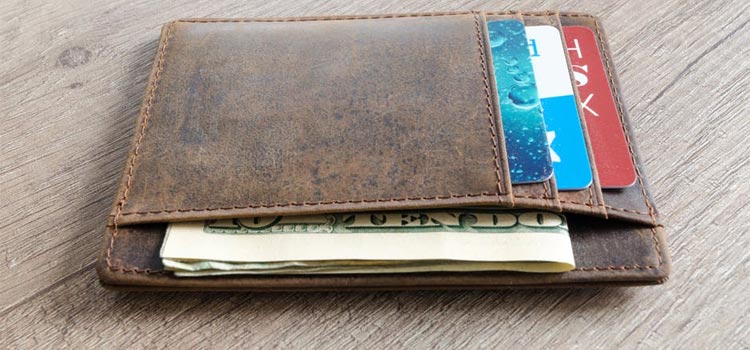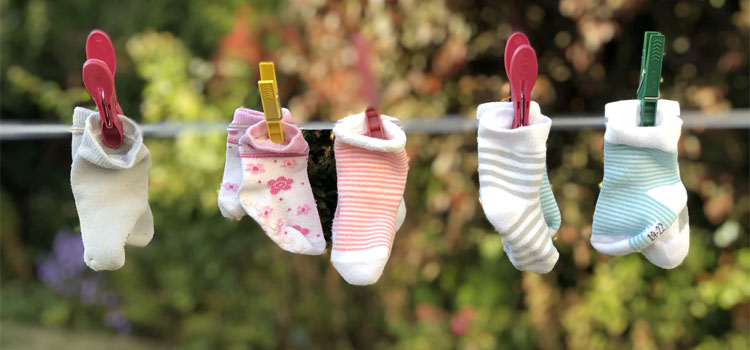People often donate their blood, but did you know that you could donate plasma for money?
- Inbox Dollars - Get paid to check your email. $5 bonus just for signing up!
- Survey Junkie - The #1 survey site that doesn't suck. Short surveys, high payouts, simply the best.
- Nielsen - Download their app and get paid $50!
Technically, you CAN sell blood. But since hospitals don’t like using it due to the potentially unsafe blood supply from “donors” lying about illnesses to earn cash, the FDA warns about it and asks all sources to label blood that came from paid donors.
There’s another serious reason why blood is tricky to sell: whole red blood cells can be tested for diseases, but they are too fragile to undergo any kind of virus removal processes. After testing, blood goes directly into another person.
Good news:
There’s a specific PART of your blood that can be sold. It’s called blood plasma and it makes up about 55% of your blood.
To obtain plasma, blood is drawn from your arm, then parts of the blood are separated via a special machine. The goal is to collect the plasma (a pale yellow liquid made up of water, enzymes, proteins, and antibodies), while the red blood cells and other leftovers are placed back into your body.
Plasma can be used in treating various health problems such as leukemia, blood disorders like hemophilia and medical emergencies like burns. It can also help people who are undergoing transplant surgeries. The properties of plasma are also used in developing medicine for rare diseases.
Interested? Read on if you want to make money in one day and decide if this is something you want to pursue…
What Are the Requirements for Donating Plasma?
Like donating blood, not everyone can donate plasma for money.
The general requirements for donating plasma include:
- Legal age – Donation centers typically allow donors from 18 to 69 years old, but the minimum age requirement could still change based on local or state laws. A written consent from a parent or guardian may be allowed, on a case-to-case basis.
- Weight – Your weight will determine how much plasma you can donate (and ultimately how much you can earn from each donation). The FDA has three weight range: 110 to 149 pounds, 150 to 174 pounds, and 175 to 400 pounds.
- Physically healthy – You should have no infectious diseases. There will be a basic check-up during your first visit to the donation center, so you must pass a heart check, urine test and blood prick test (to determine your iron, hemoglobin and blood levels). In some centers, donors are also tested for their reflexes.
- ID or other proof of identity – You must have your Social Security Card or a copy of it, other government ID, and proof of address.
Except for the physical tests, these requirements are often only needed during your first donation with a particular company.
Note that every plasma donation centers may have specific requirements, so check their websites before your visit.
What are the Restrictions that Prohibit You from Donating?
If you are deemed not an eligible donor after your physical test, you may be given one of two types of deferrals: temporary or permanent.
Temporary deferrals are given to would-be donors who:
- Weigh below 110 pounds
- Come to the centers sick with not-so-serious illnesses such as flu or tummy ache.
- Are recovering from a recent surgical procedure
- Have low levels of iron or hemoglobin
- Recently got a tattoo or any kind of piercing
After your physical test, the center will determine when is the right time to go back, what you need to do to become eligible for another go in the future..
Permanent deferrals are given to interested donors who:
- Are positive for HIV, syphilis, and hepatitis
- Suffer from any blood-related disorder or disease (such as leukemia)
- Have mental illness or anyone who does not understand the process involved with plasma donation
As its name suggest, potential donors given permanent deferrals are not (and will never be) eligible as a donor. There’s a chance you can overturn this decision with a second medical opinion.
Does Donating Plasma Hurt?
This is a valid and most common concern among potential donors. When it comes to pain, it is typically no more painful than donating blood. To answer this question, you need to understand the process involved in donating plasma.
How long does donating plasma take?
First-time donors should spare 2 hours or more for the basic physical test and filling out paperwork.
Once you’ve finished tests and paperwork, the entire procedure takes about 1 hour and 15 minutes.
If you weigh 150 to 400 pounds, it will take longer because more plasma will be taken.
What’s the process of donating plasma?
If you’ve ever donated blood before, the discomfort you felt from that experience will likely be the same for when you donate plasma for cash.
When it comes to the pain involved, the first discomfort you’d feel is the pricking of your finger during the basic blood test. The phlebotomists will then use an IV and needle to draw your blood. Of course, you’d feel hurt if they can’t find a vein, or if they blow a vein.
No joke. Here are the fastest ways to make easy money online. Click here to see how.
Once the needle is in, the plasma will be separated and taken, while the blood returns to your body. The returned blood is mixed in with saline, which can lead to some discomfort and cause you to feel cold.
People sometimes get dizzy during this stage, especially if the donor is somewhat dehydrated. This is the reason why donation centers recommend would-be donors to temporarily avoid diuretics (like coffee and alcohol) and instead drink a lot of fluids the day before and the day of donation.
Are there side effects to donating plasma?
Generally, people who donate plasma don’t experience any side effects.
But in rare cases that it does, they may experience one or more of these things:
- Bruising – Some people who are sensitive to needles and bruise easily can experience tenderness, swelling or pain at the injection site during and after the procedure. This should subside after several hours though.
- Allergic reaction – Every donation center uses different disinfectants (like iodine) for cleaning donor’s injection site. Some people may have allergic reactions to these chemicals. Let the phlebotomists know if something feels amiss.
- Citrate reaction – Used to prevent blood clots during plasma collection, citrate can cause a reaction to donors that often felt as tingling around the mouth, nose or fingers. Shortness of breath, irregular pulse, chills and twitching are severe signs of a citrate reaction.
How Often Can You Donate Plasma?
The American Red Cross guidelines state that people can only donate once every 28 days.
However, since this is only a “guideline” and not law, donation centers accept plasma donations from a person up to two times within a 7-day period with at 24 to 48 hours in between to give the body time to “refill” plasma lost from the previous donation.
How Much Do You Get for Donating Plasma?
Private blood banks and donation centers pay people $20 to $50 per donation.
Based on FDA’s weight range, you can earn:
- $15/donation if you weigh between 110 to 149 pounds
- $30/donation if you fall between 150 and 174 pounds, and
- around $45 if you’re on the third weight tier from 175 to 400 pounds.
The number of times you donate each week can also affect the amount of extra cash you can get from donating plasma.
Other factors that make the pay range higher include:
- First-timers – Plasma is big business and private companies know this. As such, they spend ads, referrals and various promotions (like coupons) to attract new donors. This is the reason why first-time donors are paid higher ($50 or more) than repeat donors.
- type AB Blood – If you have this blood type, it means you’re part of the 4% of the population with it. Plasma from this blood type is “universal,” which means it can be used by anyone regardless of blood type. As such, plasma donation centers give a higher rate to people with AB blood type.
- anti-D – This special anti-body protects babies from HDN (Rhesus Haemolytic Disease of the Foetus and Newborn), a disease wherein a mother a mother with Rh (D) negative blood is pregnant with a baby that has Rh (D) positive blood. In HDN cases, the mother’s blood develops an antibody that sees the unborn child’s red blood cells as a threat and destroys them leading to brain damage, liver disease, or death.
- Demand – if there’s a particular protein a center needs, or if business is slow, rates may suddenly become more competitive.
You might feel icky with coupons and “deals” for donating plasma, but know that you are technically selling your plasma to businesses, which in turn, sell it to pharmaceutical companies, labs and hospitals for a wide range of medical use.
In fact, some of these donation centers even give donors their own debit cards to make processing of payment smoother, and send referral fees, reward points, and other credits easier.
How to Find a Plasma Donation Center
There is no governing body of all plasma donation centers, but FDA does inspect these locations for compliance.
Your best bet is to look for online reviews from past donors and find a plasma donation center near you (so it’s easier to see if they are in compliance with state and FDA laws).
Because plasma donation centers are run by private companies, they only require regular business license to operate. If you want to make sure you’re dealing with legitimate plasma donation centers, you can also check if they are listed on the International Quality Plasma Program (IQPP).
Search “plasma donations centers near me” or see if there’s a branch of these popular centers in your area:
- BPL Plasma Donation Center – Has 14 locations across the US. Allows each donor to sell plasma twice a week. $300/month extra cash possible – more if you refer other people or participate in promos and other programs. Payment is topped up on a prepaid card.
- Octapharma Plasma– One of the biggest names in the plasma donation industry with over 100 locations across the United States. Pays up to $50 per donation and allows two donations in a 7-day window as long as there’s a 48-hour gap). Offers plenty of incentives, including a loyalty program and frequency bonuses. Octapharma Plasma pays with its own prepaid debit card.
- Biotest Plasma Center – With 12 locations (Texas, Pennsylvania, Florida, Ohio, etc.). Donors are allowed up to two times of donation per week (with a 24-hour in between donations). $50/donation is paid straight to the donor’s Biotest re-loadable MasterCard debit card, where referral and other bonuses are also deposited.
- Grifols– Similar to Octapharma in that it has over 100 locations, but this company can be under different names such as Plasma Resources, Talecris, Biomat USA, among others. Paid by prepaid debit card, Grifols pays donors varying fees for one location to the next.
- KEDPlasma – Available in Alabama, Florida, Louisiana, Nebraska, Ohio, South Carolina, and Texas, KEDPlasma can pay up to $400 per donation for those with special proteins and antibodies. Donors can also visit the center up to twice a week, as long as there’s a day in between donations. Payments are sent via a Wirecard prepaid card.
- CSL Plasma– Located in 39 states and multiple centers within each state. New donors can be paid up to $400 either via the CSL Plasma Reloadable Debit Card, or as rewards via CSL Plasma’s iGive Rewards Program.
- Interstate Companies – You can find these centers in over 14 states across the US. Payment varies by location, but all of them pay via prepaid debit card. People are allowed to donate twice a week with 2-day gap between donations.
- Biolife Plasma Services – Available in over 30 states. Earn up to $70/week if you donate the maximum 2 donations per week. Schedule appointments via its own app, and receive payments via the BioLife Debit Card.
- Physicians Plasma Alliance – This one is only located in Tennessee, but it has to be included here mainly because this center can pay up to $500 per donation. Earn more by donating up to two times per week and by sending referrals, then get paid via prepaid debut card.
- ADMA BioCenters – This one is also available in just one location in Georgia. Eligible donors can visit twice per week and paid via cash card. There are incentives for repeat donors and other programs.
- GCAM Plasma – Pays $25 to $30 per donation via debit card. You can donate twice a week with 2-day waiting period between donations. Available in California, Idaho, Indianapolis, Texas, and Washington.
- B Positive – This center is available only in New Jersey and Maryland. It’s got a cool refer-a-friend program that pays $20/referral via its own B Positive Visa debit card. As for the donations, eligible donors can be paid up to $50/week for two sessions within a 7-day period.
The Bottom Line
Selling plasma isn’t probably the most traditional thing you can sell to make money, but this industry is thriving and it won’t stop anytime soon.
Donating plasma can help save lives. You may not be directly giving your blood to another person, but companies involved in these donation centers use your donated plasma to manufacture medicine, antibodies, and other medicinal products that help others with blood diseases and disorders.
If you tried donating plasma for money, but don’t want to repeat the experience, you can still earn from this business by referring a friend, sharing a social media post of a private center, or participating in other promotions.
If selling plasma for money isn’t for you, but you need extra cash to pay your credit card, buy groceries, or add regular deposits to your emergency fund, explore the site some more and check out our guide to make money online fast doing no-brainer things like watching movies, and so on.
You can make money from home and it doesn't have to be challenging. Click here to see how.






Nice information because plasma donations center help of lot of people. Saturn Bio is a Human Blood/Plasma Donation center in Indianapolis.